Best 3.2V LiFePO4 Cells of 2024 A Complete Buyers Guide
If you're searching for reliable and long-lasting lithium iron phosphate batteries, this Guide of 3.2V LiFePO4 Cells is your go-to resource for 2024. Whether you're upgrading a solar energy system, building a DIY powerwall, or replacing worn-out cells in your battery bank, this post will give you everything you need to know to make a smart decision.
- Introduction to the Guide of 3.2V LiFePO4 Cells
- Why Use 3.2V LiFePO4 Cells – A Practical Guide of 3.2V LiFePO4 Cells
- Performance Metrics to Consider – Expert Guide of 3.2V LiFePO4 Cells
- Top 10 Picks – The Ultimate Guide of 3.2V LiFePO4 Cells in 2024
- Comparing the Options – Analytical Guide of 3.2V LiFePO4 Cells
- How to Test and Maintain Cells – Practical Guide of 3.2V LiFePO4 Cells
- Real-World Applications – A Functional Guide of 3.2V LiFePO4 Cells
- Trusted Sellers and Red Flags – Consumer Guide of 3.2V LiFePO4 Cells
- A Conclusion and Guide of 3.2V LiFePO4 Cells
Introduction to the Guide of 3.2V LiFePO4 Cells
LiFePO4 (Lithium Iron Phosphate) cells are widely regarded as the safest, most stable, and environmentally friendly lithium battery chemistry. The Guide of 3.2V LiFePO4 Cells introduces users to high-performance energy solutions that outperform traditional lead-acid and other lithium-ion cells in lifespan, safety, and efficiency.
Whether you’re a seasoned battery enthusiast or a beginner planning your first solar setup, this 2024 guide provides detailed insights into performance specs, real-world user reviews, and the best applications for each cell model.
Why Use 3.2V LiFePO4 Cells – A Practical Guide of 3.2V LiFePO4 Cells
Exceptional Safety and Stability
One of the biggest selling points of 3.2V LiFePO4 cells is their impressive thermal and chemical stability. Compared to other lithium chemistries, they are less likely to overheat or combust, making them ideal for large-scale battery storage and home installations.
Long Lifespan and Deep Cycle Durability
A well-maintained LiFePO4 cell can endure over 3000-6000 charge cycles. With daily use, this equates to over 10 years of dependable energy storage. This Guide of 3.2V LiFePO4 Cells will help you find options with the highest rated life cycles, ensuring you get maximum return on your investment.
Environmental and Cost Advantages
These cells do not contain cobalt or other toxic heavy metals, making them more eco-friendly. Over time, their extended life span and efficiency reduce the total cost of ownership, especially in off-grid or renewable energy systems.
>>See also Is EZGO Better Than Club Car A Comprehensive Comparison
Performance Metrics to Consider – Expert Guide of 3.2V LiFePO4 Cells
Capacity Ratings (Ah)
Common capacities include 50Ah, 100Ah, 280Ah, and 304Ah. The right capacity depends on your application—smaller cells for lightweight EVs, larger ones for solar backup systems. Our Guide of 3.2V LiFePO4 Cells compares capacity with real-world performance data.
Internal Resistance
Lower internal resistance means less heat and higher efficiency. Top-tier cells usually offer internal resistance below 0.3 mΩ, enabling fast charging and discharging without thermal issues.
Energy Density
While LiFePO4 cells are bulkier than Li-ion alternatives, newer cells in 2024 are approaching 140–160 Wh/kg, closing the gap while keeping the chemistry safer and longer-lasting.
Grade and Consistency
Always look for Grade A cells with consistent voltage and capacity readings. This ensures better performance and easier pack balancing. A reputable supplier will always provide factory test reports.
Top 10 Picks – The Ultimate Guide of 3.2V LiFePO4 Cells in 2024
We’ve curated this list based on real-world performance, supplier reputation, BMS compatibility, and end-user feedback.
1. EVE LF280K – The Industry Favorite
Capacity: 280Ah
Cycle Life: 8000 cycles
Grade: A
Application: Powerwalls, solar backup
Pros: Stable voltage, strong terminal build
Cons: Requires precise balancing
2. CATL 302Ah – High-End Performer
Capacity: 302Ah
Grade: A
Cycle Life: 8000+
Pros: Compact size, top-tier BMS compatibility
Cons: Slightly higher price
3. Lishen 272Ah – Efficiency Meets Affordability
Capacity: 272Ah
Resistance: <0.3mΩ
Pros: Great consistency, affordable
Cons: Lesser brand recognition
4. REPT 280Ah – Rugged Reliability
Great for mobile and industrial use
Enhanced anti-vibration build
Competitive pricing
5. EVE LF105 – Compact and Lightweight
Capacity: 105Ah
Best for: RVs and portable power banks
Known for excellent thermal control
6. CALB 100Ah – Balanced Power Option
Durable and cost-effective
Often used in marine applications
Easy to find in international markets
7. Ruipu 280Ah – New Challenger
Increasingly popular due to price-performance ratio
Requires careful sourcing to avoid B-grade units
8. Ganfeng 100Ah – Budget Conscious Pick
Great for smaller setups and DIYers
Limited cycle count but unbeatable cost
9. Yinlong 66160H – Ultra Fast Charge
Best used in UPS and high-speed charge applications
Rare chemistry mix within the LiFePO4 family
10. Headway 38120HP – Modular Solution
Unique cylindrical design
Great for hobbyists and modular BMS setups
Supports high discharge rates
Comparing the Options – Analytical Guide of 3.2V LiFePO4 Cells
Let’s break down how these cells compare in terms of pricing, longevity, and discharge performance.
|
Model |
Capacity |
Cycle Life |
Price (Approx.) |
Notable Feature |
|
EVE LF280K |
280Ah |
6000 |
$110–$140 |
Top-tier consistency |
|
CATL 302Ah |
302Ah |
6000+ |
$130–$160 |
Compact size |
|
Lishen 272Ah |
272Ah |
5000 |
$100–$120 |
Economical option |
|
REPT 280Ah |
280Ah |
6000 |
$105–$125 |
Shock-resistant casing |
This Guide of 3.2V LiFePO4 Cells aims to make such comparisons easy so you can choose what truly fits your needs.
How to Test and Maintain Cells – Practical Guide of 3.2V LiFePO4 Cells
Initial Voltage Testing
Each cell should arrive with a resting voltage between 3.27V and 3.29V. Large differences could indicate imbalance or damage.
IR (Internal Resistance) Testing
Using a milliohm meter, test for internal resistance. A healthy Grade A cell will show <0.3 mΩ. Anything above 0.5 mΩ may indicate degradation.
BMS Integration Tips
Match your Battery Management System (BMS) voltage and current ratings to the cells. Ensure your BMS supports temperature sensors and cell balancing for optimal performance.
Proper Charging and Discharging Practices
Max Charge Voltage: 3.65V
Max Discharge Voltage: 2.5V
Recommended Charging Rate: 0.2C – 0.5C
Storage: Store at ~50% SOC, in a cool dry place
>>See also Amp Hours to Kilowatt Hours Conversion Calculator Guide
Real-World Applications – A Functional Guide of 3.2V LiFePO4 Cells
Off-Grid Solar Systems
A 48V 280Ah battery bank made of 16 LiFePO4 cells can power an entire home. The low self-discharge and high energy retention make them ideal for solar integration.
EV Conversions and Golf Carts
Their fast charge rate and robust power output have made LiFePO4 cells the top choice for electric vehicles and golf carts.
Marine and RV Power
Compact, lightweight, and safe—LiFePO4 packs are revolutionizing mobile energy needs for boats and campers.
DIY Powerwalls
The DIY community continues to thrive on 3.2V cells for custom energy walls. This Guide of 3.2V LiFePO4 Cells helps even beginners make safe and efficient packs.
Trusted Sellers and Red Flags – Consumer Guide of 3.2V LiFePO4 Cells
Where to Buy
Alibaba / AliExpress (always check seller reviews)
Battery Hookup (USA)
EVE Authorized Distributors
Signature Solar / Current Connected
Red Flags
Mismatched QR codes and serials
Missing test reports
No warranty
Inconsistent cell voltages
Buying from reputable sources ensures you receive genuine, safe products backed by warranties and performance data.
A Conclusion and Guide of 3.2V LiFePO4 Cells
The future of energy storage is undeniably heading toward LiFePO4, and this Guide of 3.2V LiFePO4 Cells ensures you're ahead of the curve in 2024. Whether your priority is safety, longevity, performance, or budget, there’s a perfect cell out there to meet your needs.
In conclusion, choosing the right 3.2V LiFePO4 cell means understanding capacity, consistency, and application suitability. With thousands of choices out there, having a structured Guide of 3.2V LiFePO4 Cells like this one empowers you to make a confident, informed purchase decision that will power your system for years to come.

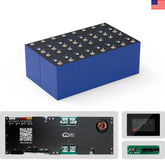



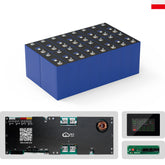

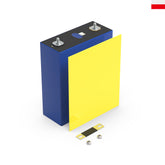

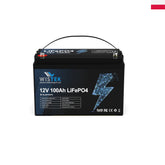
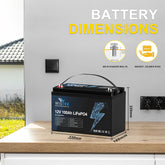


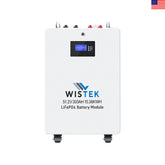
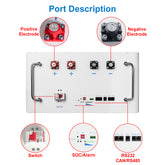
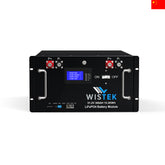
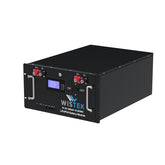


2 Comments
Subject: Request for Quotation – CATL 302Ah LiFePO₄ Cells (32 Units)
Dear Wis-Tek Team,
I am interested in purchasing CATL 302Ah LiFePO₄ cells (Grade A, 8000+ cycles) as featured in your buyer’s guide.
Could you please provide me with your best quotation for 32 units, including:
• Unit price (excl./incl. GST if applicable)
• Shipping cost to Tasmania North Launceston
• Lead time / availability
• Warranty terms
Looking forward to your reply.
Kind regards,
Meisam Gholampour
Subject: Request for Quotation – CATL 302Ah LiFePO₄ Cells (32 Units)
Dear Wis-Tek Team,
I am interested in purchasing CATL 302Ah LiFePO₄ cells (Grade A, 8000+ cycles) as featured in your buyer’s guide.
Could you please provide me with your best quotation for 32 units, including:
• Unit price (excl./incl. GST if applicable)
• Shipping cost to Tasmania North Launceston
• Lead time / availability
• Warranty terms
Looking forward to your reply.
Kind regards,
Meisam Gholampour
Leave a comment
All blog comments are checked prior to publishing